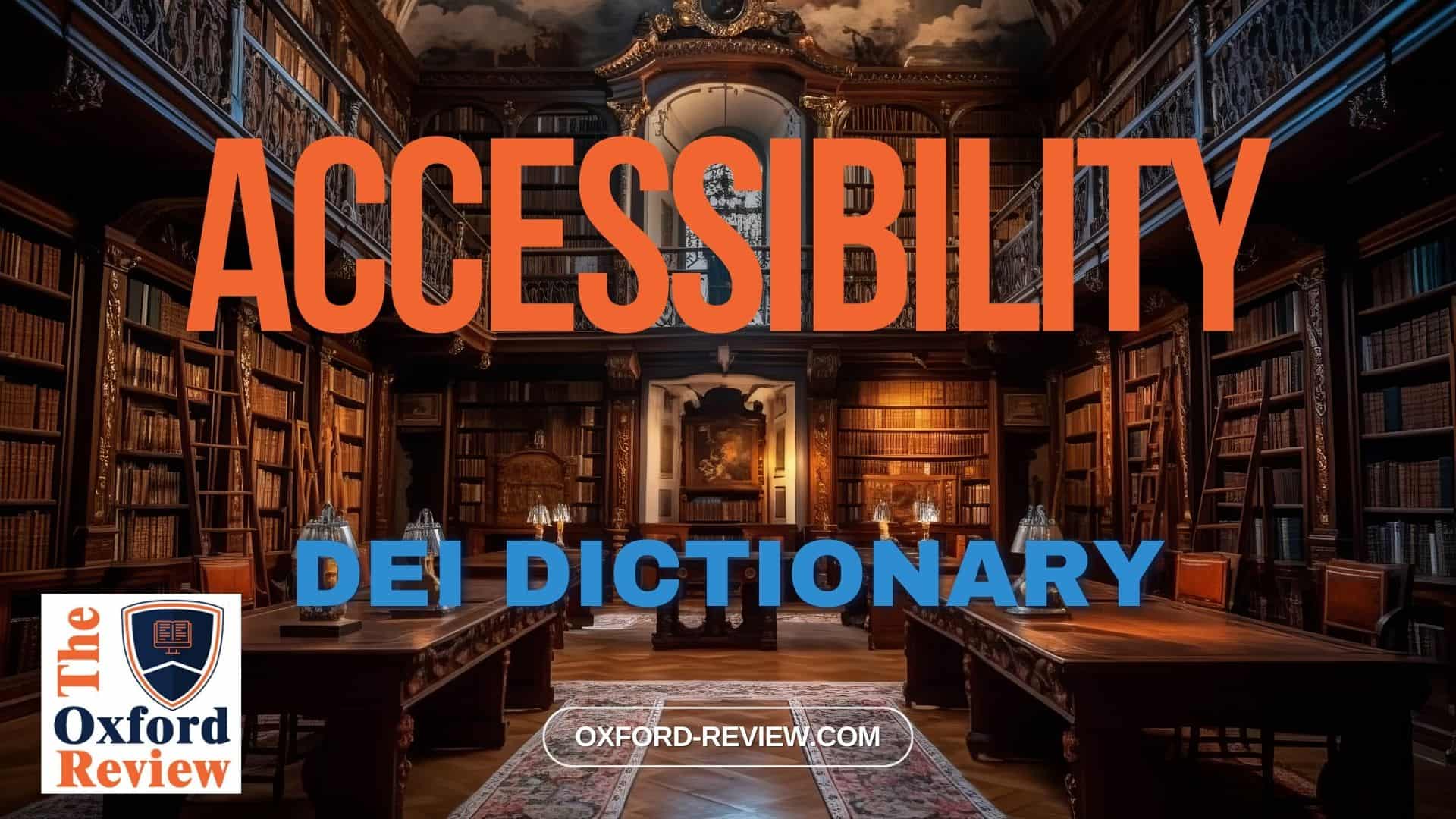Accessibility – Definition and Explanation

Understanding Accessibility: Key to Diversity, Equity, and Inclusion
In today’s rapidly evolving world, fostering diversity, equity, and inclusion (DEI) is paramount for businesses and communities alike. Central to this ethos is the concept of accessibility, which goes beyond physical spaces to encompass digital platforms, services, and opportunities.
Definition:
Accessibility refers to the design and provision of products, services, environments, and facilities that can be accessed and used by everyone, regardless of their age, ability, or status. It aims to eliminate barriers, ensuring equal access and participation for all individuals, including those with disabilities, limited mobility, or diverse backgrounds. Accessibility encompasses various aspects, including physical, digital, and communication accessibility.
The Role of Accessibility in DEI:
Accessibility is a fundamental pillar of diversity, equity, and inclusion initiatives. By embracing accessibility principles, organisations can create inclusive environments that empower individuals from all walks of life. For instance, implementing wheelchair ramps and lifts in buildings not only facilitates mobility for people with disabilities but also promotes a sense of belonging and equal opportunity.
In the digital realm, ensuring website accessibility through features such as screen reader compatibility and alternative text for images enhances usability for individuals with visual impairments. Moreover, providing captioning and transcripts for videos improves access for those with hearing impairments, thus fostering a more inclusive online experience.
Example:
Consider a scenario where a university adopts accessibility measures for its online learning platform. By incorporating features like adjustable font sizes, high contrast themes, and keyboard navigation, the university ensures that students with visual or motor impairments can navigate the platform with ease. Additionally, providing closed captions for instructional videos and accessible course materials benefits students with hearing impairments or learning disabilities, enabling them to fully engage with the curriculum. As a result, the university promotes equitable access to education, fostering a diverse and inclusive learning environment.
Conclusion:
Incorporating accessibility principles is not just a legal or moral obligation but a strategic imperative for organisations committed to DEI. By prioritising accessibility in physical spaces, digital platforms, and beyond, businesses and communities can create environments where everyone feels valued, respected, and empowered. Embracing accessibility isn’t just about compliance—it’s about building a more inclusive society where every individual has the opportunity to thrive.
References:
Harris, B. (2001). Accessibility: concepts and applications. Journal of Transportation and Statistics, 4(2/3), 15-30. https://books.google.co.uk/books?hl=en&lr=&id=yvmFQCc2Gh8C&oi=fnd&pg=PA15&dq=Accessibility&ots=ncAqSjD-Yj&sig=ArMDjymN2k3Q-jFMY-I8deocGGE#v=onepage&q=Accessibility&f=false
Be impressively well informed

Get the very latest research intelligence briefings, video research briefings, infographics and more sent direct to you as they are published
Be the most impressively well-informed and up-to-date person around...
